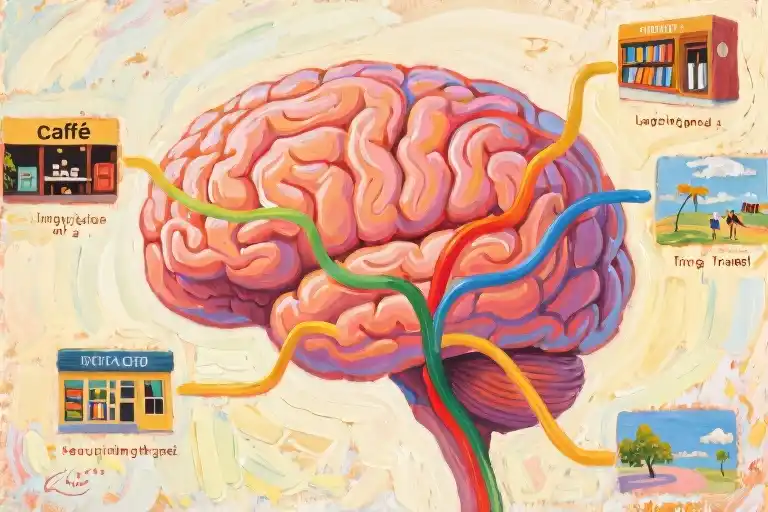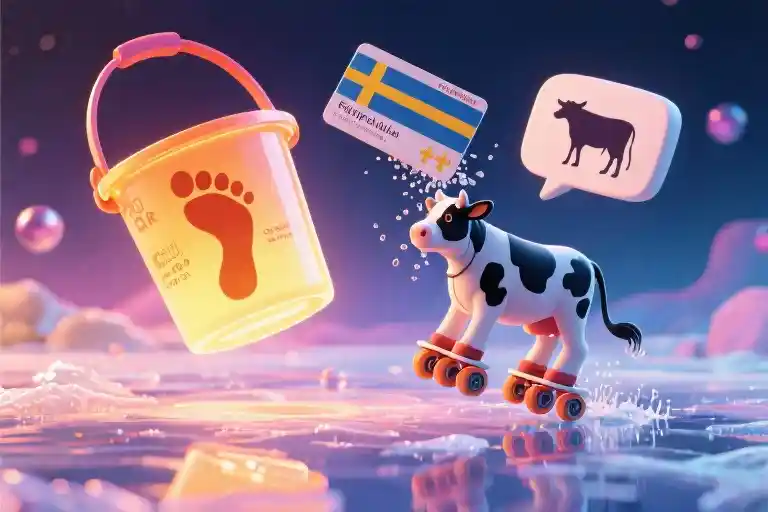How many English words do you think you know? Go ahead, take a guess. Now multiply that number by thirty. That’s roughly how many words exist in the Oxford English Dictionary – a staggering 600,000 entries waiting to be discovered, while most native speakers comfortably navigate daily life with just 20,000 to 30,000 words. This gap between dictionary enormity and personal utility forms the fascinating tension at the heart of English vocabulary study.
Dictionaries aren’t created equal. The OED stands as the gold standard, meticulously documenting every whisper of the English language across centuries – from Shakespearean turns of phrase to freshly minted tech jargon. Its 600,000+ entries include words like “flother” (an obsolete term for snowflake) alongside modern additions like “photobomb.” Meanwhile, Webster’s Third New International Dictionary takes a more pragmatic approach with about 470,000 words, focusing on contemporary usage rather than historical completeness.
What makes these numbers particularly intriguing is how little they reflect actual language use. Consider this: the average college-educated English speaker actively uses perhaps 5% of the OED’s total entries. We operate within cozy linguistic neighborhoods while the dictionary sprawls like an endless metropolis. This discrepancy explains why two people can fluently speak the same language yet have surprisingly different vocabulary sizes.
The journey from dictionary headcount to personal vocabulary involves understanding three key dimensions: the vast lexical repository preserved by dictionaries, the practical subset employed by individuals, and the dynamic nature of English that constantly reshapes both. Whether you’re a language learner gauging progress, a writer seeking precision, or simply curious about linguistic boundaries, recognizing these layers transforms how we approach word mastery.
In the following sections, we’ll explore how lexicographers count words (is “run” the same word when it means jogging versus a stocking blemish?), why your brain discards words you once knew, and how to strategically expand your vocabulary without drowning in the dictionary’s depths. The truth about English vocabulary isn’t found in any single number, but in understanding the relationship between those 600,000 dictionary entries and the 20,000 words that actually serve your life.
The Lexical Cosmos of English Dictionaries
Dictionaries aren’t just books—they’re living archives of human expression. The Oxford English Dictionary (OED) stands as the most comprehensive, housing over 600,000 words like a vast museum where ‘thou’ sits alongside ‘blockchain.’ Compare this to Webster’s Third New International Dictionary’s 470,000 words, and you begin to see how editorial philosophies shape these lexical universes.
The OED’s staggering 130,000-word lead over Webster’s comes from its historical approach. It preserves obsolete terms like ‘frobisher’ (a 16th-century term for trifling objects) alongside modern additions like ‘photobomb.’ This makes it less a practical toolbox than a cultural time capsule—valuable for researchers but overwhelming for casual learners.
Visualizing these differences helps: imagine three overlapping circles representing OED, Webster’s, and Collins dictionaries. The shared center contains about 300,000 core English words—the common ground where ‘love’ and ‘computer’ reside. OED’s unique outer ring bulges with historical relics and regionalisms (‘bumbershoot’ for umbrella in Pacific Northwest slang), while Webster’s emphasizes contemporary American usage (prioritizing ‘side hustle’ over ‘antiquarianisms’).
What surprises most isn’t the numbers themselves, but their implications. That 600,000-word count includes multiple meanings for single words—’set’ has 464 definitions in the OED. It also reflects English’s absorptive nature: ‘karaoke’ (Japanese), ‘schadenfreude’ (German), and ’emoji’ (Japanese again) all found homes here. The dictionary isn’t just counting words—it’s mapping cultural collisions.
For writers and learners, this diversity presents both opportunity and overwhelm. The OED might help you resurrect Shakespearean flair, while Webster’s keeps your tech blog sounding current. But as we’ll see next, neither comes close to the vocabulary humans actually use daily—a reality that should relieve more than intimidate.
Where Does Your Vocabulary Stand?
The gap between dictionary word counts and personal vocabulary can feel overwhelming. While comprehensive references like the Oxford English Dictionary catalog over 600,000 lexical items, most native English speakers actively use only 20,000 to 30,000 words throughout their lifetime. For language learners, this discrepancy raises practical questions about what constitutes functional fluency.
The Vocabulary Spectrum
Native speakers typically fall within these ranges:
- Conversational fluency: 5,000-10,000 words allows for everyday communication
- Advanced proficiency: 15,000-20,000 words covers most professional contexts
- Highly articulate: 25,000+ words enables nuanced expression across specialized fields
Second language learners often achieve:
- Basic survival: 1,000-2,500 words for fundamental needs
- Intermediate comfort: 3,000-6,000 words for social interactions
- Advanced mastery: 8,000-10,000 words approaching native-like comprehension
These numbers reflect active vocabulary – words we regularly use. Passive vocabulary (words recognized but not employed) typically doubles these figures.
The 1,000 Word Threshold
Research reveals an intriguing pattern: mastering the most frequent 1,000 English words provides comprehension of approximately 89% of daily conversations. This core vocabulary includes:
- Essential verbs (be, have, do)
- Common nouns (time, person, year)
- Basic modifiers (good, new, first)
While insufficient for academic or professional settings, this foundation allows learners to navigate most social situations. The next 1,000 words add another 5-7% coverage, demonstrating the diminishing returns of vocabulary expansion.
Gauging Your Lexical Range
Try this quick self-assessment using tiered vocabulary markers:
- Elementary (3,000 words): compromise, genuine
- Intermediate (6,000 words): ambiguous, phenomenon
- Advanced (10,000 words): ephemeral, quintessential
- Specialized (15,000+ words): hegemony, ontological
Recognition of these words suggests corresponding vocabulary breadth. However, true mastery requires both comprehension and active usage – many learners can read sophisticated texts while struggling to employ those same words in speech or writing.
Passive vs. Active Mastery
The distinction between understanding and using words explains why vocabulary tests often overestimate practical ability. You might:
- Recognize fastidious when reading
- Understand fastidious in context
- Yet never choose fastidious when speaking
This explains why learners with 8,000-word passive vocabularies might still struggle with spontaneous expression. Effective language development requires converting passive recognition into active recall through deliberate practice.
Practical Implications
Rather than fixating on absolute numbers, consider:
- Specialization needs: Technical fields require targeted vocabulary
- Communication goals: Social fluency demands different words than academic writing
- Learning methods: Flashcards build recognition, while conversation develops usage
The healthiest approach views vocabulary as a living system – some words naturally fade while others take root through repeated use. Periodic review maintains what you’ve learned, while new experiences organically introduce fresh terminology.
The Life and Death of English Words
Language moves like a living organism, constantly shedding old cells and growing new ones. The Oxford English Dictionary team adds about 4,000 new words annually while quietly retiring others – a linguistic Darwinism where only the fittest terms survive. This evolutionary process reveals fascinating patterns about our changing world.
Consider the journey of ‘cancel culture.’ First appearing in 2014 Twitter discussions about celebrity scandals, this phrase gained enough traction that by 2019, dictionary editors noticed it appearing across diverse contexts – from political commentary to workplace HR policies. The OED requires three independent published examples before considering inclusion. When ‘cancel culture’ met this threshold across newspaper editorials, academic papers, and fiction works, it earned its dictionary debut in 2020. Such rapid adoption (just six years from coinage to canonization) contrasts sharply with historical norms – Shakespeare’s ‘bedazzled’ took nearly three centuries to gain dictionary recognition.
Meanwhile, some words fade into obscurity with surprising speed. The pronoun ‘whom’ has seen a 72% usage decline since 1970, preserved mainly in formal writing and grammar pedantry. Lexicographers track these declines through corpus linguistics – massive databases tracking word frequency across books, speeches, and digital communications. When a word’s usage drops below certain thresholds (typically appearing less than once per 10 million words), it may get labeled ‘archaic’ or ‘obsolete.’ Interestingly, some dying words find niche afterlives – ‘thou’ survives primarily in religious contexts and fantasy novels, while ‘groovy’ persists ironically in retro-themed marketing.
Dictionary editors operate like linguistic epidemiologists. Teams at Merriam-Webster and OED monitor emerging terms through:
- Media consumption algorithms flagging sudden frequency spikes
- Submissions from the public (about 1,000 suggestions monthly reach OED editors)
- Cross-referencing academic databases and specialized glossaries
Their decisions carry surprising weight. When a major dictionary recognizes a term like ‘cisgender’ or ‘photobomb,’ it legitimizes that concept in public discourse. Conversely, excluding contested terms (Merriam-Webster deliberately omits ‘irregardless’) makes a quiet statement about linguistic standards.
This constant turnover reflects deeper cultural shifts. The 2020s have seen explosive growth in:
- Digital communication terms (’emoji,’ ‘DM’ as verb)
- Mental health vocabulary (‘trigger warning,’ ‘gaslighting’)
- Environmental lexicon (‘climate anxiety,’ ‘upcycling’)
Meanwhile, terms like ‘rotary phone’ and ‘carbon copy’ inch toward obsolescence as the technologies they describe fade from daily life. The average dictionary word now has a 50-100 year lifespan – far shorter than during print-dominated eras.
For language learners, this fluidity presents both challenge and opportunity. While chasing the latest slang often proves futile (yesterday’s ‘on fleek’ becomes today’s cringe), noticing which new terms appear in respected dictionaries signals their staying power. A useful rule: if a word survives five years across multiple contexts (appearing in news, literature, and technical writing), it’s likely becoming standard vocabulary rather than passing fad.
Finding Your Ideal Dictionary Match
Dictionaries aren’t one-size-fits-all tools. The right choice depends entirely on what you need from the English language – whether you’re digging through academic texts, polishing your novel, or simply trying to understand movie dialogues without subtitles. Let’s break down the best options for different purposes.
For serious academic work, nothing beats the Oxford English Dictionary’s historical depth. Its 600,000+ entries include obsolete terms you might encounter in Renaissance literature and precise etymologies that trace words back centuries. Researchers appreciate how it documents a word’s entire lifespan, from first recorded use to current meanings. The online version updates quarterly with newly added words like “deepfake” and “hygge,” though the $90 annual subscription gives budget-conscious users pause.
Writers crafting contemporary pieces often prefer Merriam-Webster’s Collegiate Dictionary. Its 470,000 entries focus on current American usage, with clear guidance on tricky grammatical choices. The free online version includes a thesaurus function perfect for battling word repetition. What writers love: the “Word History” notes explaining how “quarantine” evolved from meaning forty days to any isolation period.
English learners get the most mileage from Cambridge Advanced Learner’s Dictionary. Its defining vocabulary uses only 2,000 common words to explain 140,000 entries, creating accessible definitions without oversimplifying. The color-coded pronunciation guides help master sounds like the subtle difference between “ship” and “sheep.” Best of all? The entire dictionary lives online for free, complete with bilingual translations in 20+ languages.
Three warning signs your dictionary might be outdated: it lacks entries for “selfie” (added to major dictionaries between 2013-2015), defines “tweet” only as a bird sound, or mentions “tablet” without reference to computers. While vintage dictionaries make charming decor, their missing tech terms and evolving social vocabulary (like “they” as a singular pronoun) render them unreliable for modern use.
The sweet spot? Pair a comprehensive free online dictionary with a mid-range paperback for offline use. Cambridge Dictionary + Merriam-Webster’s $15 paperback covers 95% of needs for most users. Specialized fields like medicine or engineering warrant niche dictionaries – Dorland’s Medical Dictionary explains terms like “neuroplasticity” more thoroughly than general references ever could.
Your ideal dictionary should feel like a helpful conversation partner, not an intimidating authority figure. Try reading five definitions from different dictionaries – the one that consistently makes concepts click is your language match. Remember, even Shakespeare got by with just 31,000 words. What matters isn’t how many words your dictionary contains, but how well it helps you use the ones you need.
Finding Your Perfect Dictionary Match
Standing in front of a bookstore’s reference section, you might feel overwhelmed by the dictionary options. The truth is, no single dictionary serves all purposes equally well. Your ideal choice depends entirely on what you need from the English language.
For serious scholars and etymologists, the Oxford English Dictionary remains the gold standard. Its 600,000+ entries include words Shakespeare used and terms from obscure regional dialects. The OED doesn’t just define words – it traces their entire life story through dated quotations. But this depth comes at a cost, both in literal dollars (subscriptions run about $90 annually) and in complexity. Most people find its academic focus overkill for daily use.
American writers and students often prefer Merriam-Webster’s Collegiate Dictionary. With around 470,000 words, it covers modern vocabulary thoroughly while omitting archaic terms like “thou” that still clutter the OED. What makes Webster’s particularly valuable are its clear usage notes that settle common debates – is it “flammable” or “inflammable”? (Both mean the same thing, confusingly.)
English learners might consider the Cambridge Advanced Learner’s Dictionary. It limits entries to about 140,000 words – still more than anyone will ever actively use – but focuses on how words function in real sentences. Definitions avoid complex vocabulary themselves, using a controlled 2,000-word defining vocabulary. When you look up “metaphor,” you won’t need to then look up three words in its definition.
Here’s a quick test to identify your dictionary soulmate: When you encounter an unfamiliar word, do you (a) want to know its 14th century origins, (b) need clarification on current American usage, or (c) require simple examples of how to use it tomorrow? Your answer points to OED, Merriam-Webster, or Cambridge respectively.
Digital options have transformed dictionary access. While printed editions freeze vocabulary at publication date, online dictionaries continuously add words like “contactless” and “hybrid work.” Most now include audio pronunciations – crucial for mastering English’s irregular sounds. Surprisingly, some free online dictionaries outperform their paid counterparts in certain areas. Vocabulary.com excels at contextual examples, while the Macmillan Dictionary provides brilliant metaphor explanations.
Before you commit to a dictionary, check when it was last updated. That 2005 edition on your shelf won’t include “selfie” or “crowdfunding.” Many libraries provide free access to premium online dictionaries – always worth investigating before purchasing. And remember, even the most comprehensive dictionary becomes useless if its explanations confuse you more than the original word did. The best dictionary isn’t the one with the most words, but the one that makes the words you need most accessible to you.
Action Steps:
- Open your current dictionary and search for “cryptocurrency” – is it there?
- Test three dictionary apps to compare their voice pronunciation quality
- Bookmark one free online dictionary for quick consultations
Next time, we’ll explore how to bridge the gap between recognizing words and actually wielding them with precision – moving from vocabulary accumulation to genuine expression power.





